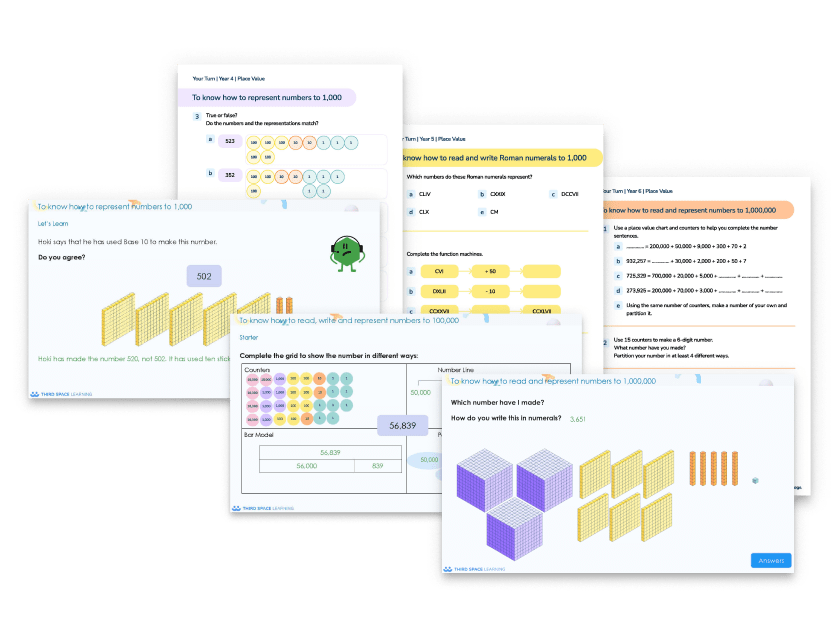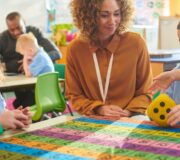White Rose Maths Year 1: What Students Learn And The Resources To Support Them
Here we look at the White Rose Maths Year 1 scheme of learning, the topics it covers across the year and provide lots of sample questions and White Rose Maths resources for those following White Rose in Year 1.
About White Rose Maths
The White Rose Education Maths scheme of learning follows the national curriculum with a mastery approach to maths with a range of fluency, reasoning and problem solving elements. They also encourage concrete, pictorial and abstract representations to develop deep understanding of mathematical concepts.
Read more: White Rose Maths
It is thought that approximately 70% of schools in the UK follow the White Rose Maths scheme. Because of this, our team of maths teachers and pedagogy experts use White Rose maths to inform the development of our tutoring programmes and to train Skye, the AI maths tutor. This enables our tutoring to deliver one to one, personalised lessons that feel familiar to students who are used to White Rose and that can have close transferability from tutoring to the classroom.
Throughout this article you’ll see example lesson slides and example questions from Third Space Learning’s Year 1 maths curriculum that exemplify best practice teaching to the White Rose Maths Year 1 scheme.
Year 1 White Rose Place Value Lesson
Download these free Year 1 White Rose resources to teach your class place value. You will need to register or login to the Maths Hub but it’s totally free!
Download Free Now!About the Year 1 White Rose maths resources provided
In this article we’ve included lots of links to Year 1 White Rose Maths resources that are suitable for use for each topic. All of these links will take you to the Third Space Learning Maths Hub. Many of the resources are free to download once you’ve registered (also free); others are accessible with a premium subscription.
You’ll also be able to review our entire range of maths resources for Year 1 while you’re there, most of which are aligned to White Rose Maths. Keep reading to find out more about these resources and the Year 1 White Rose Maths scheme.

Meet Skye, the voice-based AI tutor making maths success possible for every student.
Built by teachers and maths experts, Skye uses the same pedagogy, curriculum and lesson structure as our traditional tutoring.
But, with more flexibility and a lower cost, schools can scale online maths tutoring to support every student who needs it.
Watch Skye in actionAbout the White Rose Maths Year 1 scheme of learning
The primary school White Rose Maths scheme of learning has gone through several iterations and versions up to the current version 3. The scheme of learning SOL is designed as guidance and it is not necessarily intended for each small step to take one lesson. As with all teaching, it is important that teachers adapt this SOL for their class/ pupils.
Topics covered in Year 1 White Rose Maths scheme of learning work
The White Rose Maths Year 1 SOL outlines which topics are taught, and when, throughout the autumn, spring and summer terms of Year 1.
The breakdown for Version 3 of the scheme of learning is as follows
Year 1 autumn term
- Place value (within 10)
- Addition and subtraction (within 10)
- Shape
Year 1 spring term
- Place value (within 20)
- Addition and subtraction (within 20)
- Place value (within 50)
- Length and height
- Mass and volume
Year 1 summer term
- Multiplication and division
- Fractions
- Position and direction
- Place value (within 100)
- Money
- Time
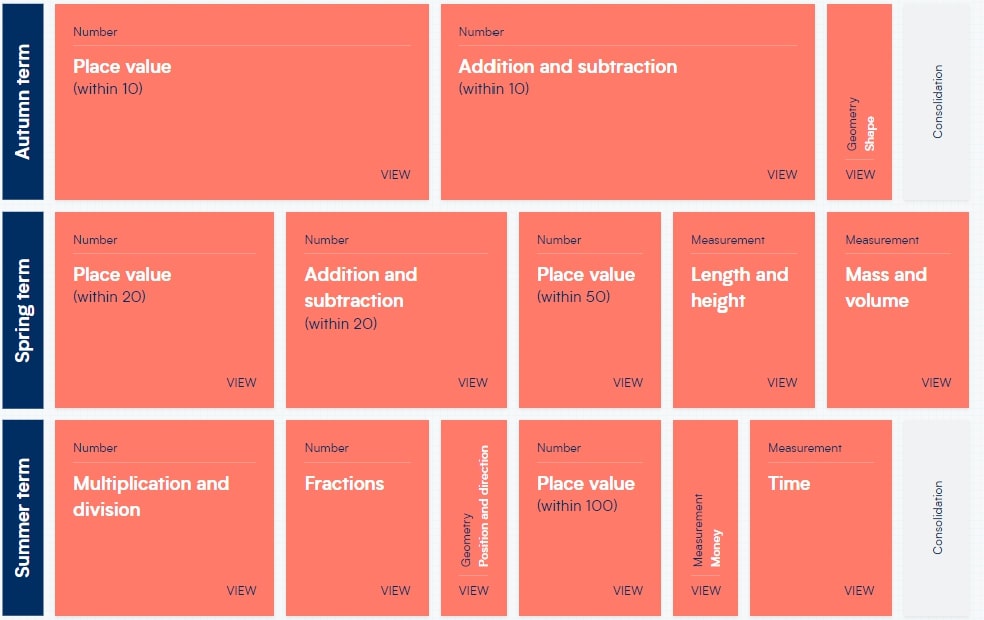
Recommended White Rose Maths Year 1 resources
Third Space Learning has created several collections of White Rose Maths aligned resources for all primary year groups from Year 1 through to Year 6. These resources can provide a different perspective on a topic and so help pupils spend the time needed to fully embed a concept.
Here is a summary of the different collections available for schools following Year 1 White Rose Maths, many of them free to download from our Maths Hub. Links to the topic specific versions are provided within each termly breakdown below:
Ready to go lesson slides
These ready-to-go lesson slides come in the form of editable PowerPoints with related worksheets that are designed for everyday teaching. The slides cover both version 2 of the White Rose scheme of learning (in blue) and version 3 of the SOL. They also include support slides that can be used to support pupils who need a little extra pre/ post teaching to support their understanding.
Pre and Post Diagnostic Assessments
These assessments can be used before starting a block of learning to assess gaps, and after teaching a block of learning to identify progress.
Worked examples
Pupils check over completed questions to identify errors (or identify correct answers). Pupils are encouraged to explain the errors they find, not just ‘mark’ work. These worked examples help to solidify understanding by getting the pupil to discuss errors and how to avoid them.
White Rose Maths Year 1 autumn term
In the autumn term, Year 1 focuses on place value within 10, addition & subtraction within 10 and shape.
Place Value Year 1
Place value is taught as four separate blocks across the year, in Year 1; with children working within 10 in the autumn term, within 20 and within 50 in the spring term and within 100 in the summer term.
Place Value Within 10 Year 1
This first place value block is the longest of the four place value blocks, spanning five weeks. At this stage, pupils learn to sort, count and represent objects; recognise numbers as words; count on and backwards within 10 and find 1 more /1 less. Children also learn to compare and order numbers and to use a number line
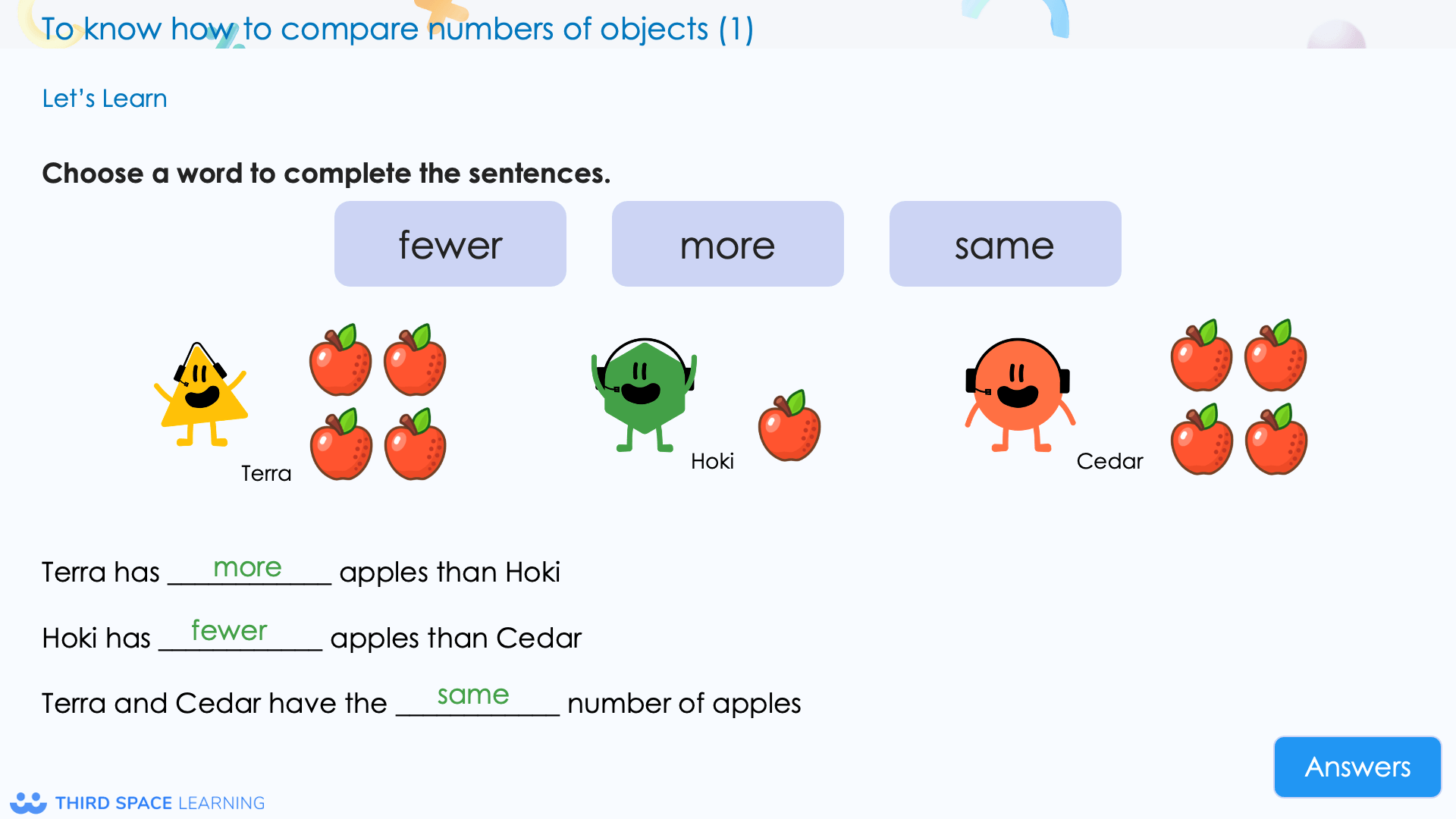
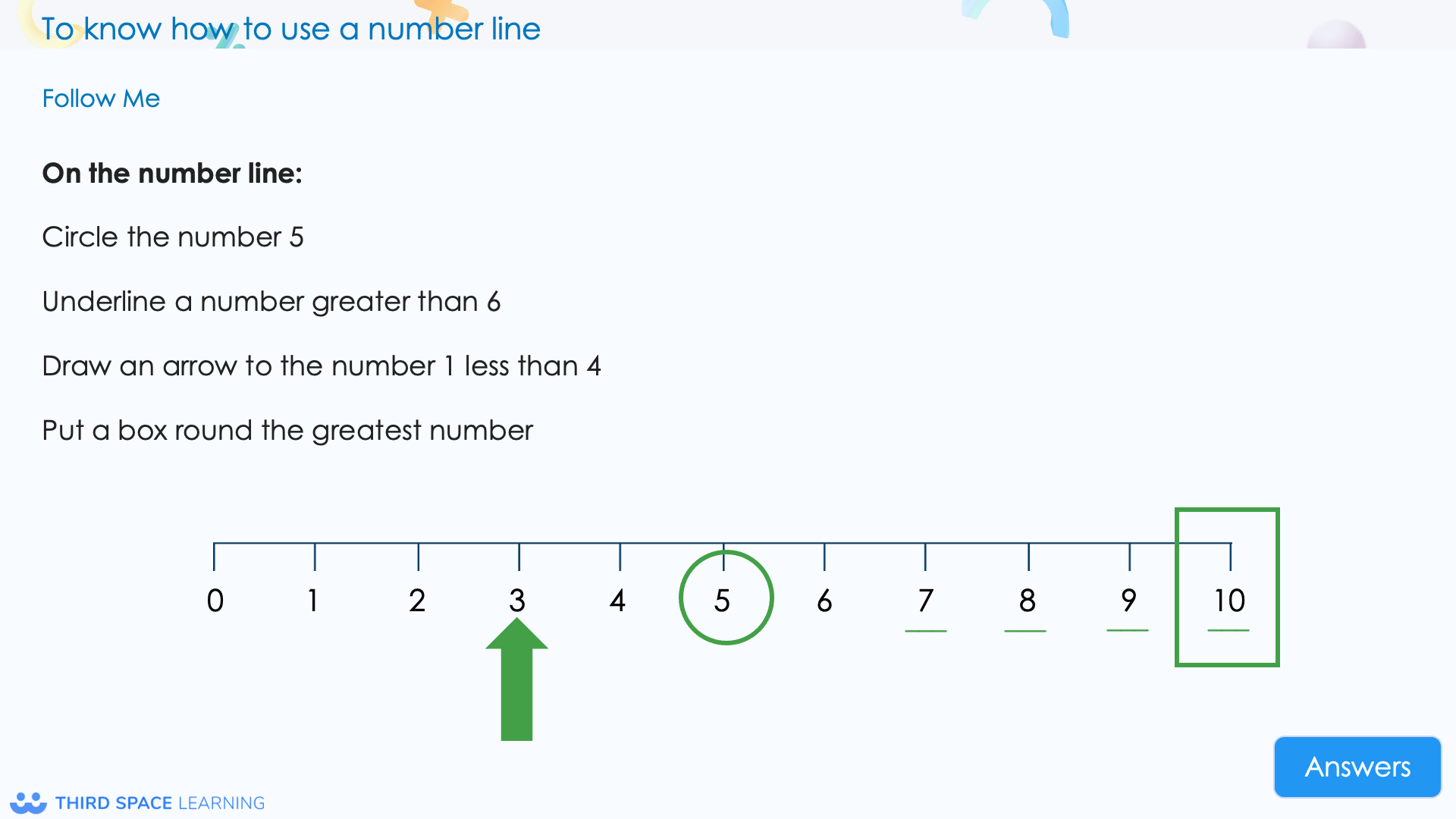
Example Year 1 place value within 10 questions
1. How many apples are there?
(Can you put a tens frame here, with 7 apples?)
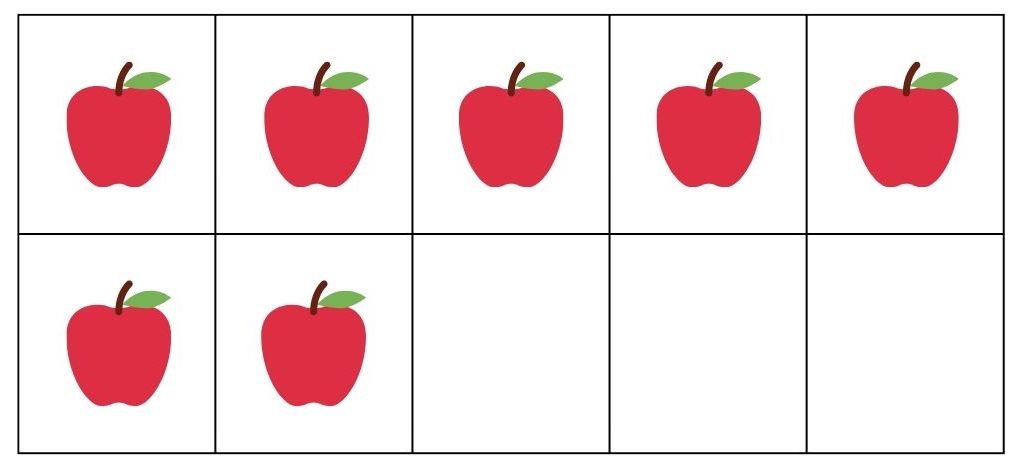
Answer: 7 apples
2. Circle 7 ladybirds.
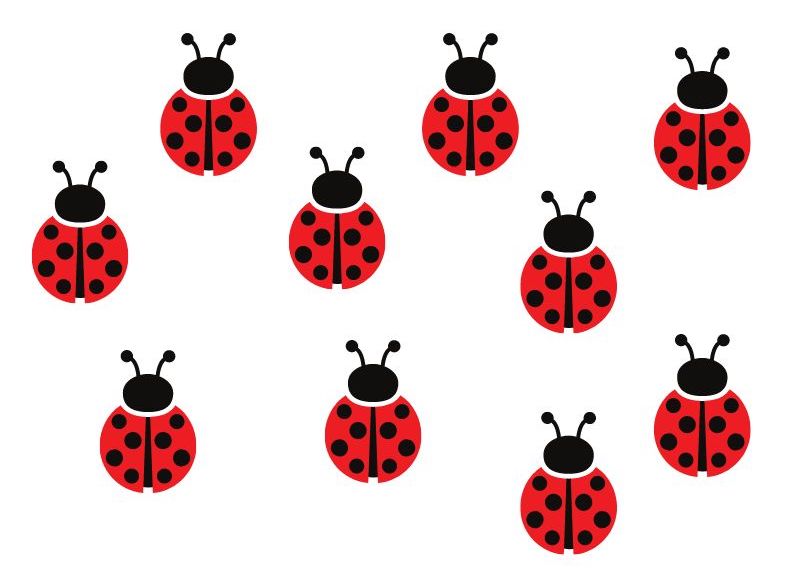
Answer: 7 ladybirds circled
White Rose Maths Year 1 place value within 10 resources (FREE)
- Ready-to-go Lessons Place Value Within 10 Year 1
- Diagnostic Assessments Place Value Within 10 Year 1
- Worked Examples Place Value Within 10 Year 1
Addition and Subtraction Year 1
Addition and subtraction is another topic, which is split across several blocks. Children learn to add and subtract within 10 in the autumn term and progress to adding and subtracting within 20 in the spring term.
Addition and Subtraction Within 10 Year 1
In this first addition and subtraction block, pupils use part-whole models to investigate parts and wholes. Children learn to write number sentences; identify fact families and to calculate number bonds to 10. They use a range of concrete resources and pictorial representations to support them when adding and subtracting.
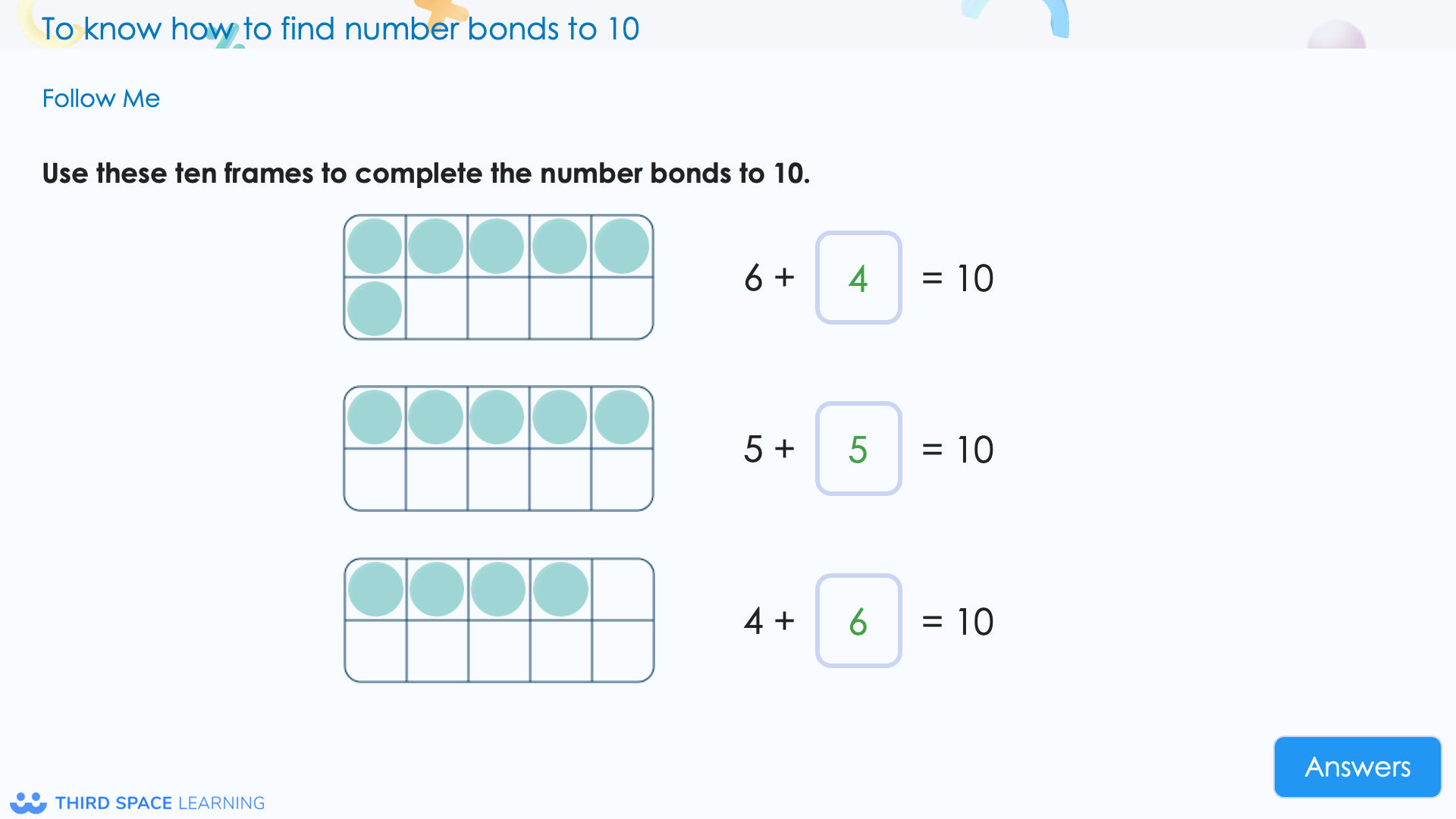

value within 10 block, they can then use number lines
to complete subtraction calculations.
Example Year 1 addition and subtraction questions
1. How many counters are there altogether?
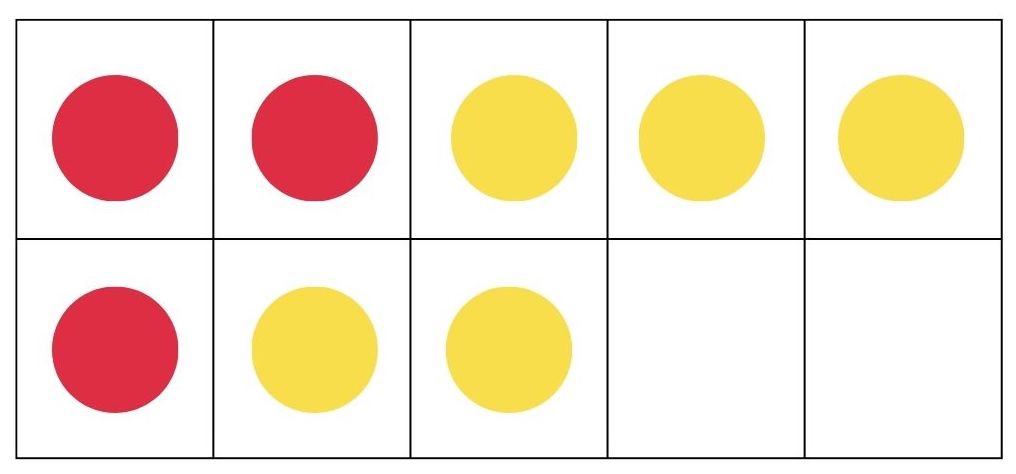
Answer: 8 counters
2. Ben had 10 sweets. He gave 4 to his sister. How many did he have left?
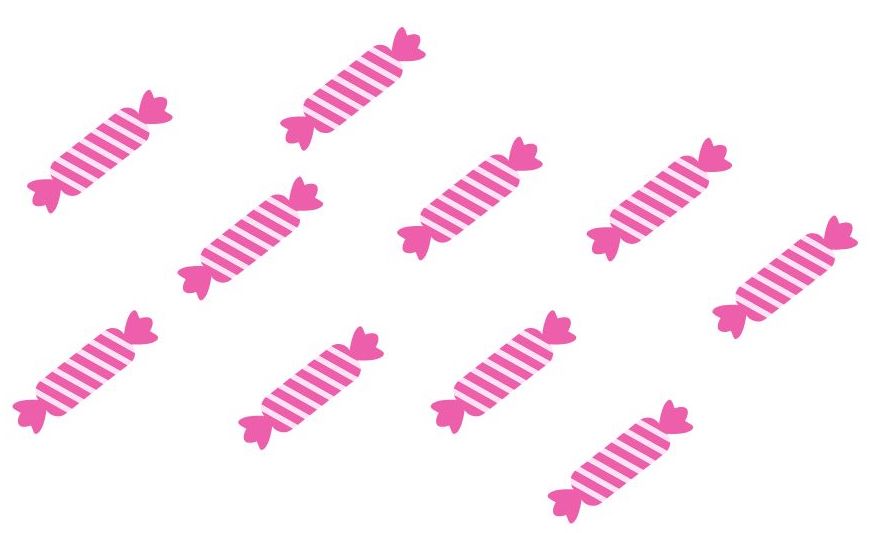
Answer: 6 sweets.
White Rose Maths Year 1 addition and subtraction within 10 resources (PREMIUM)
- Ready-to-go Lessons Addition and Subtraction Within 10 Year 1
- Diagnostic Assessments Addition and Subtraction Within 10 Year 1
- Worked Examples Addition and Subtraction Within 10 Year 1
Shape Year 1
Pupils begin this block by recognising, naming and sorting 3D shapes. They move on to investigating 2D shapes and learn to make patterns using both 2D and 3D shapes.
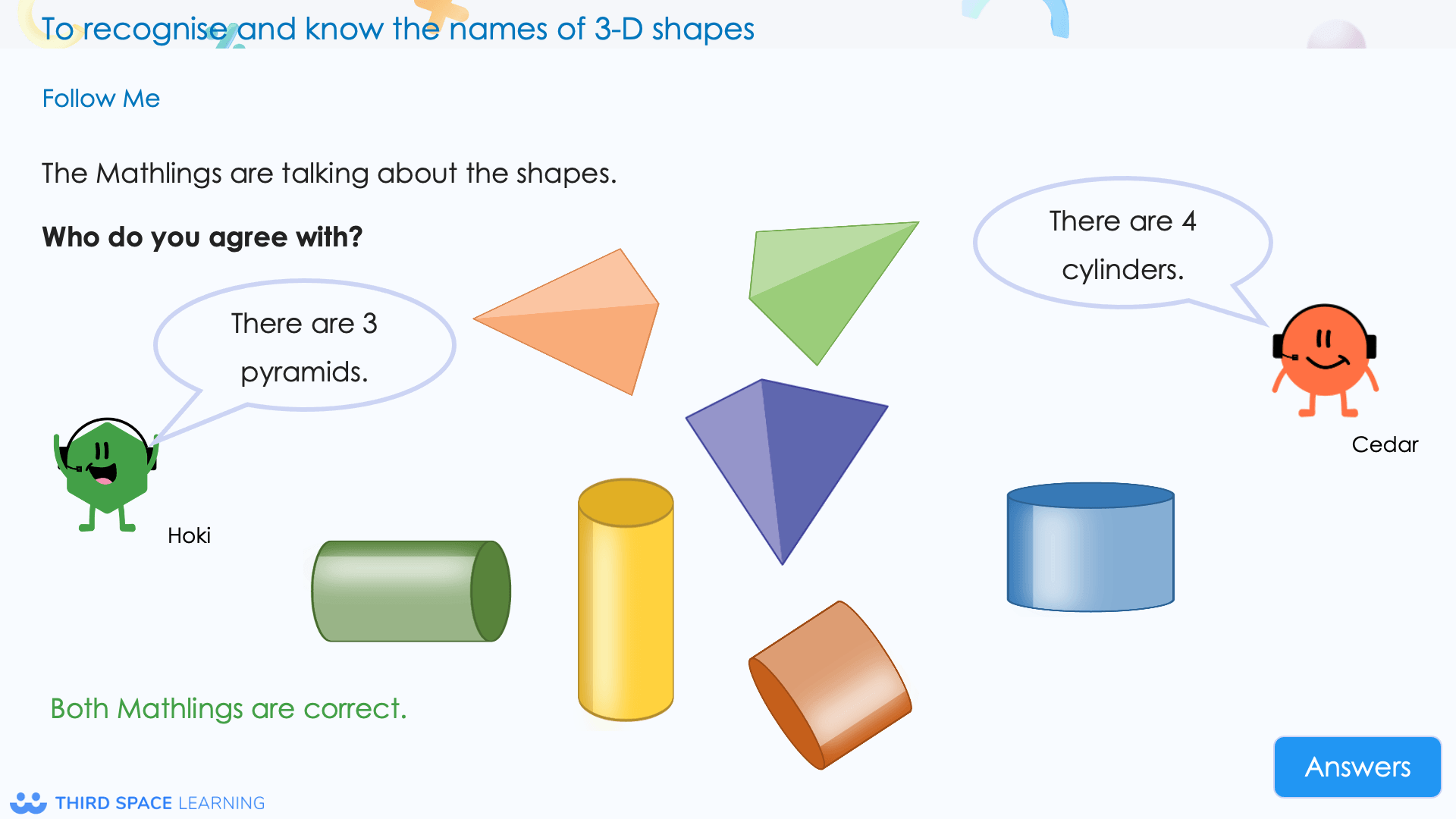
them when they are shown in a range of orientations.
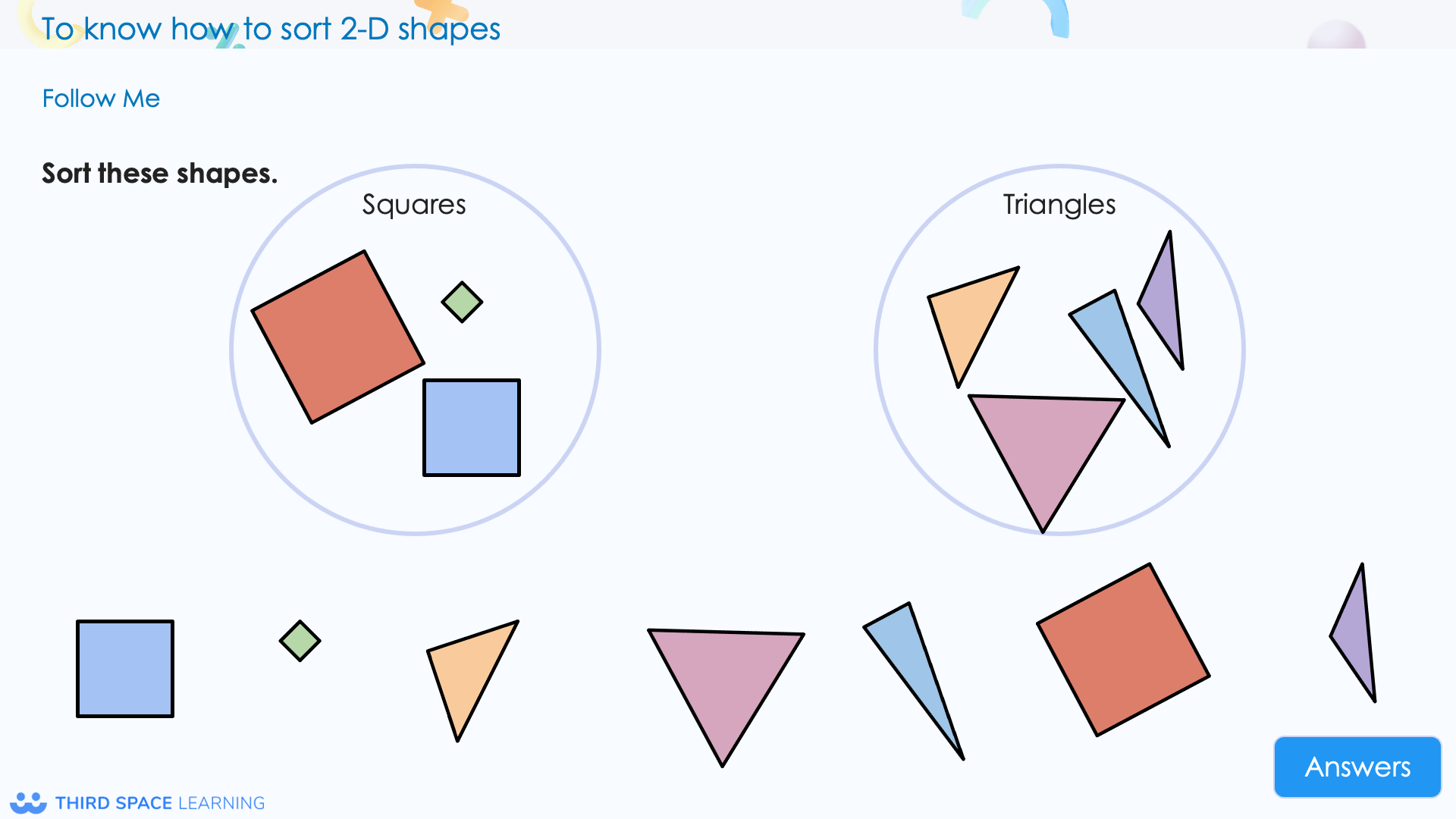
they can sort them into groups using different
properties such as names of shapes, colours, size.
Example Year 1 shape questions
1. Match the shape name to the shape.
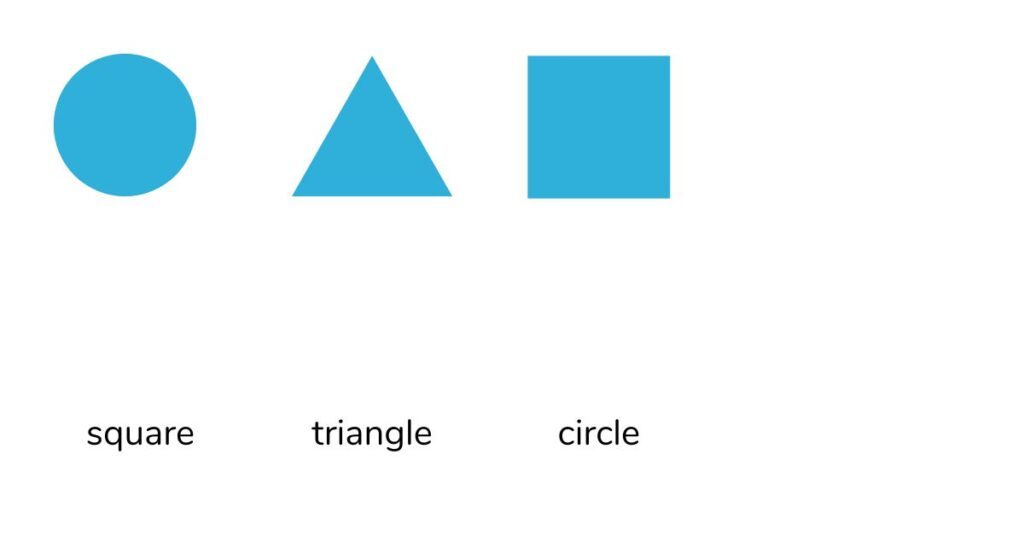
Answer: Shapes labelled
2. 2 shapes were used to make a pattern.
a) Can you draw the rest of the pattern?
b) Can you name the 2 shapes in the pattern?

Answer:

White Rose Maths Year 1 shape resources (PREMIUM)
White Rose Maths Year 1 spring term
In the spring term, Year 1 focuses on place value within 20, addition and subtraction within 20, place value within 50, length & height and mass & volume.
Place Value Within 20 Year 1
This second place value block is a shorter block than in the autumn term. Pupils count within 20 and continue to build on their understanding of 1 more and 1 less. They use a number line to 20 and learn to compare and order numbers to 20.
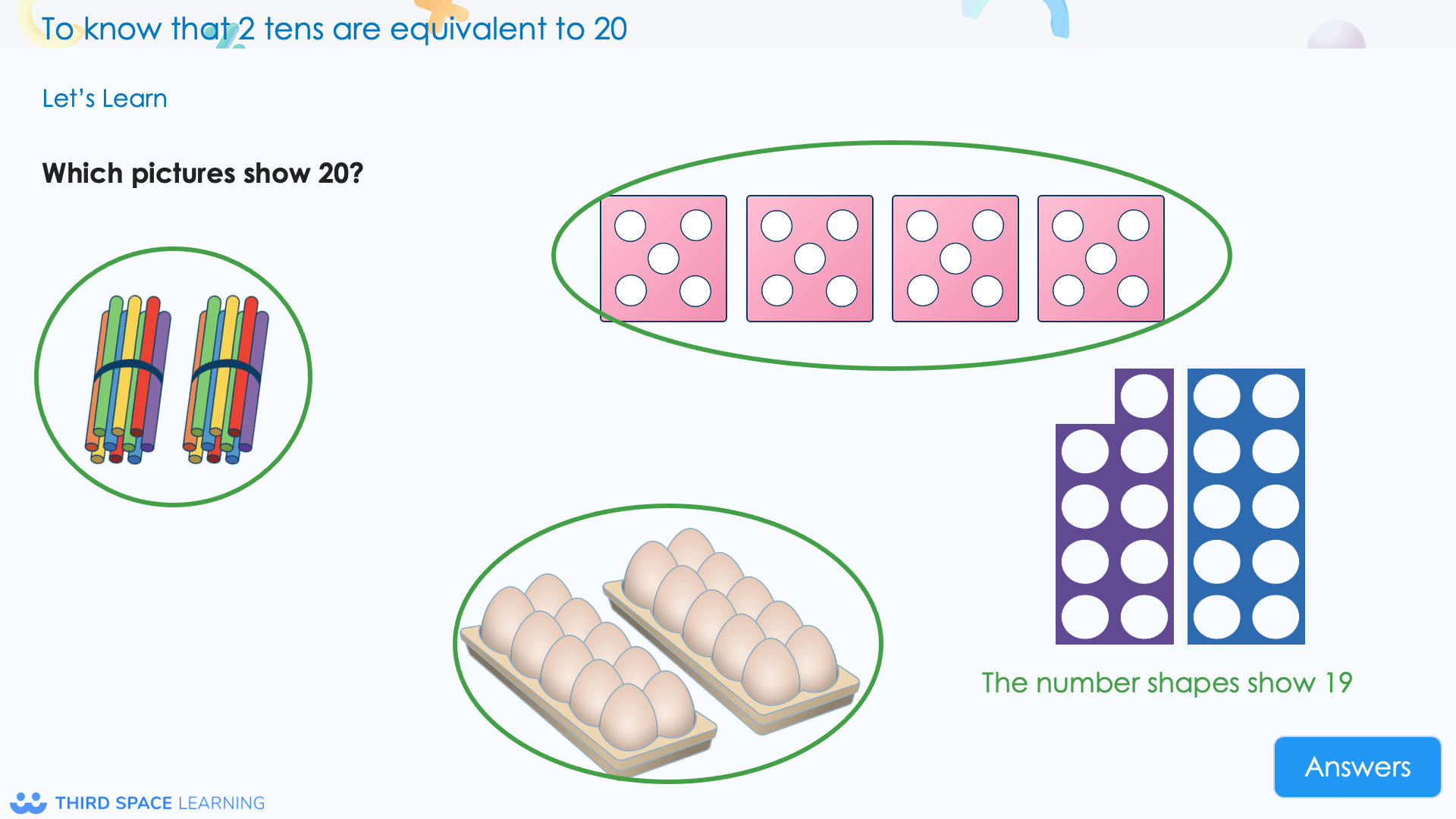
including 20 itself. When looking at 20, pupils
learn to understand that 2 tens are equivalent to 20.
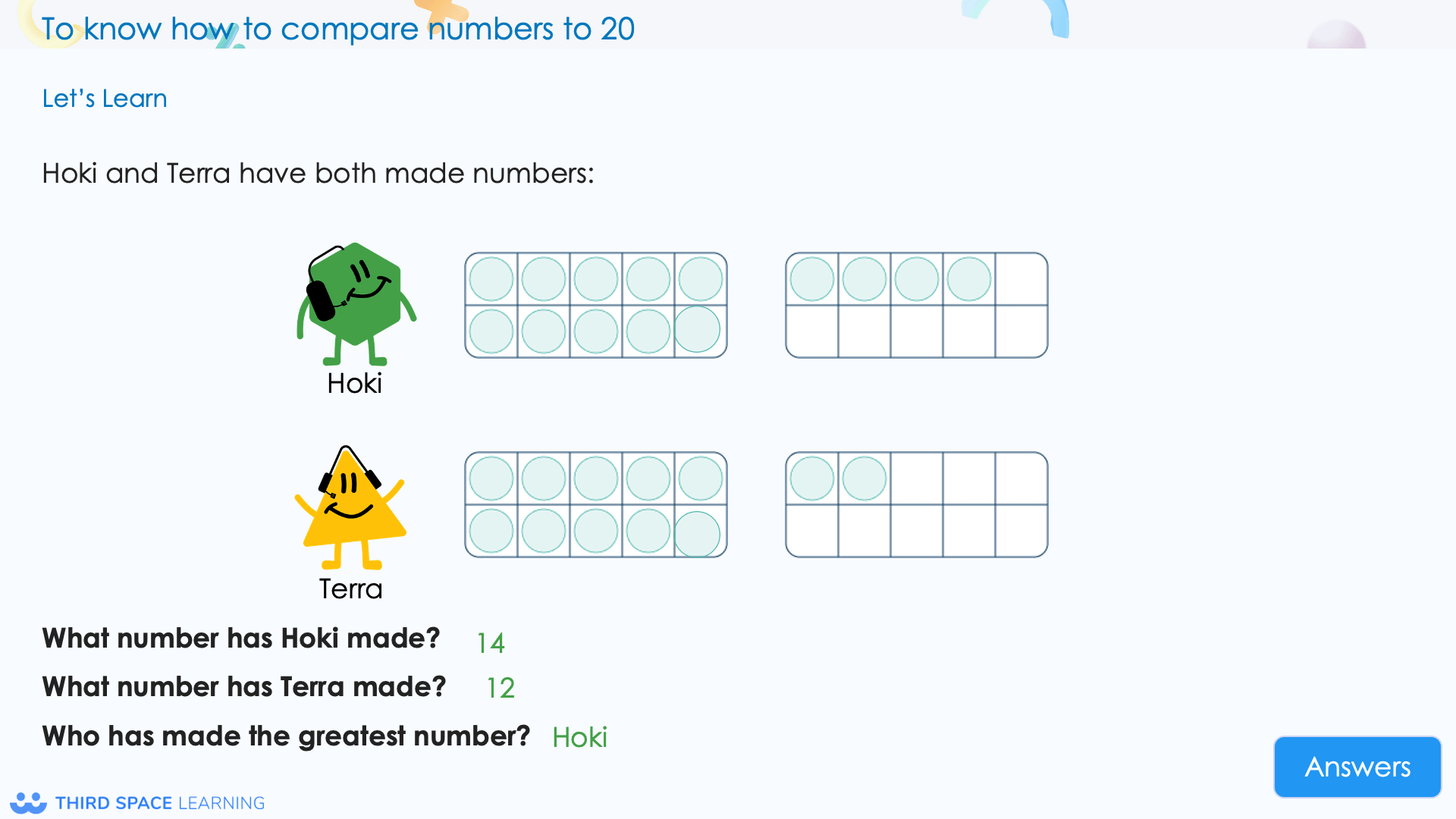
Example Year 1 place value within 20 questions
1. Write down the number shown in the tens frame.
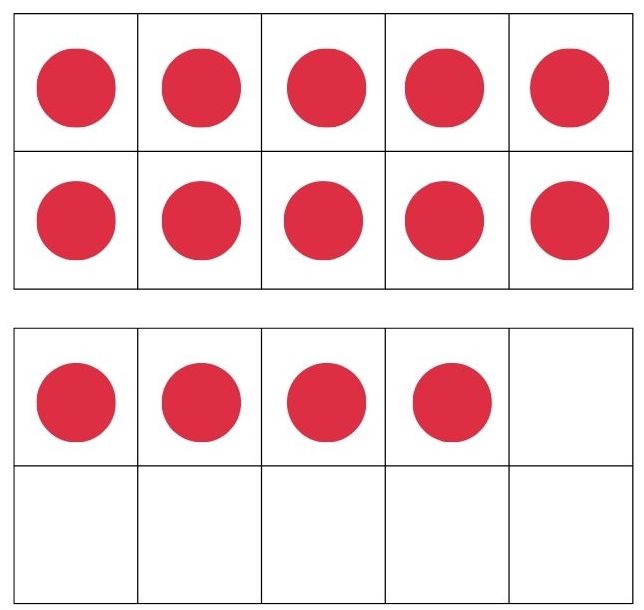
Answer: 14
2. What number is represented here?
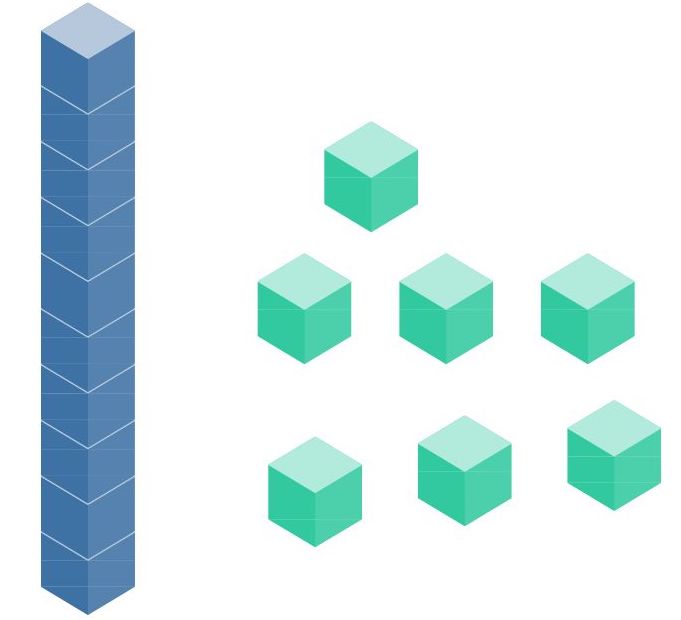
Answer: 17
White Rose Maths Year 1 place value within 20 resources (FREE)
White Rose Maths Year 1 place value within 20 resources (PREMIUM)
- Ready-to-go Lessons Place Value Within 20 Year 1
- Diagnostic Assessments Place Value Within 20 Year 1
- Worked Examples Place Value Within 20 Year 1
Addition and Subtraction Within 20 Year 1
In this second addition and subtraction block, pupils memorise and reason with number bonds to 20. They also investigate doubles and near doubles and learn to subtract using number bonds; counting back and finding the difference. Children also explore related facts and missing number problems.
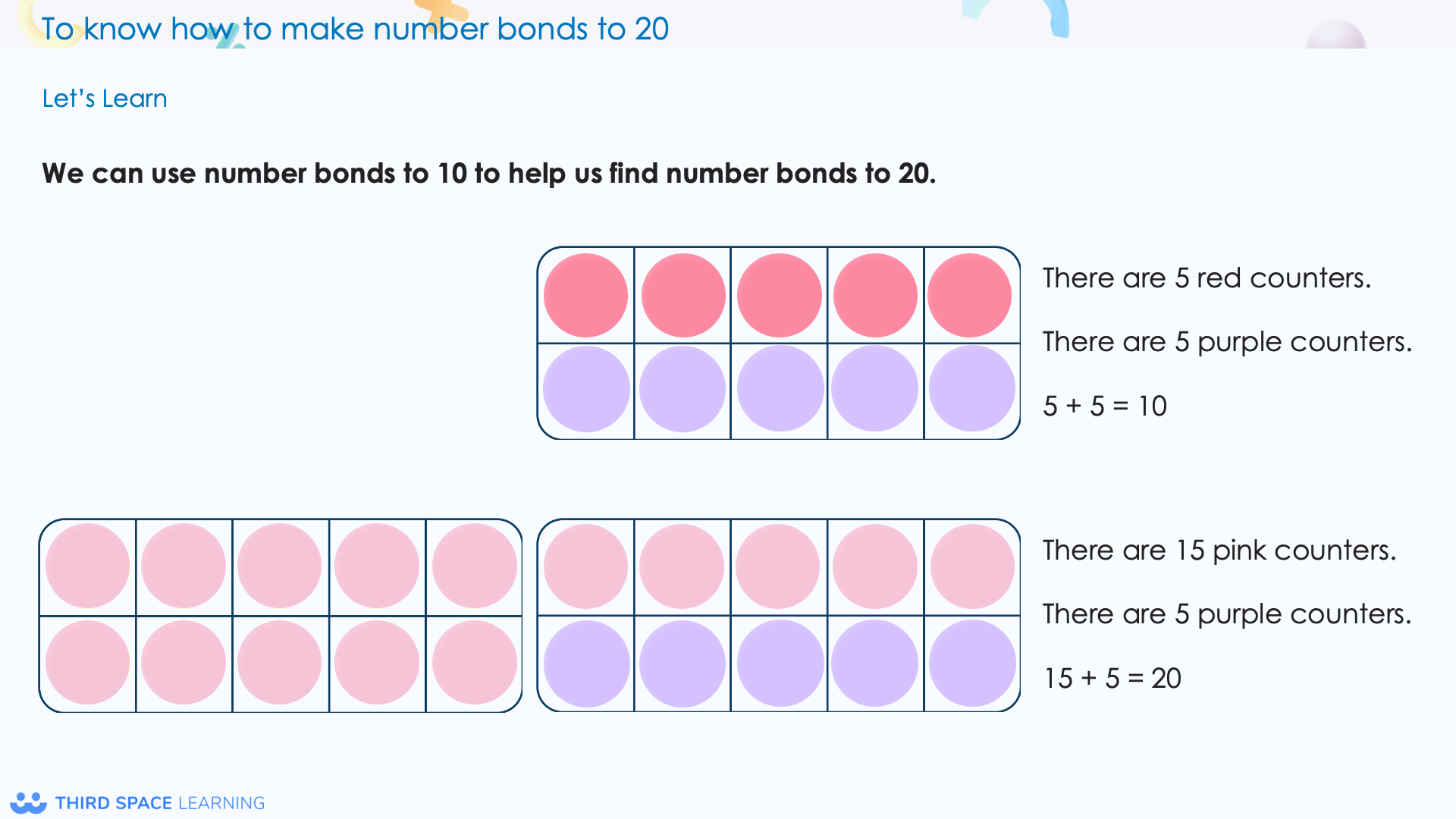
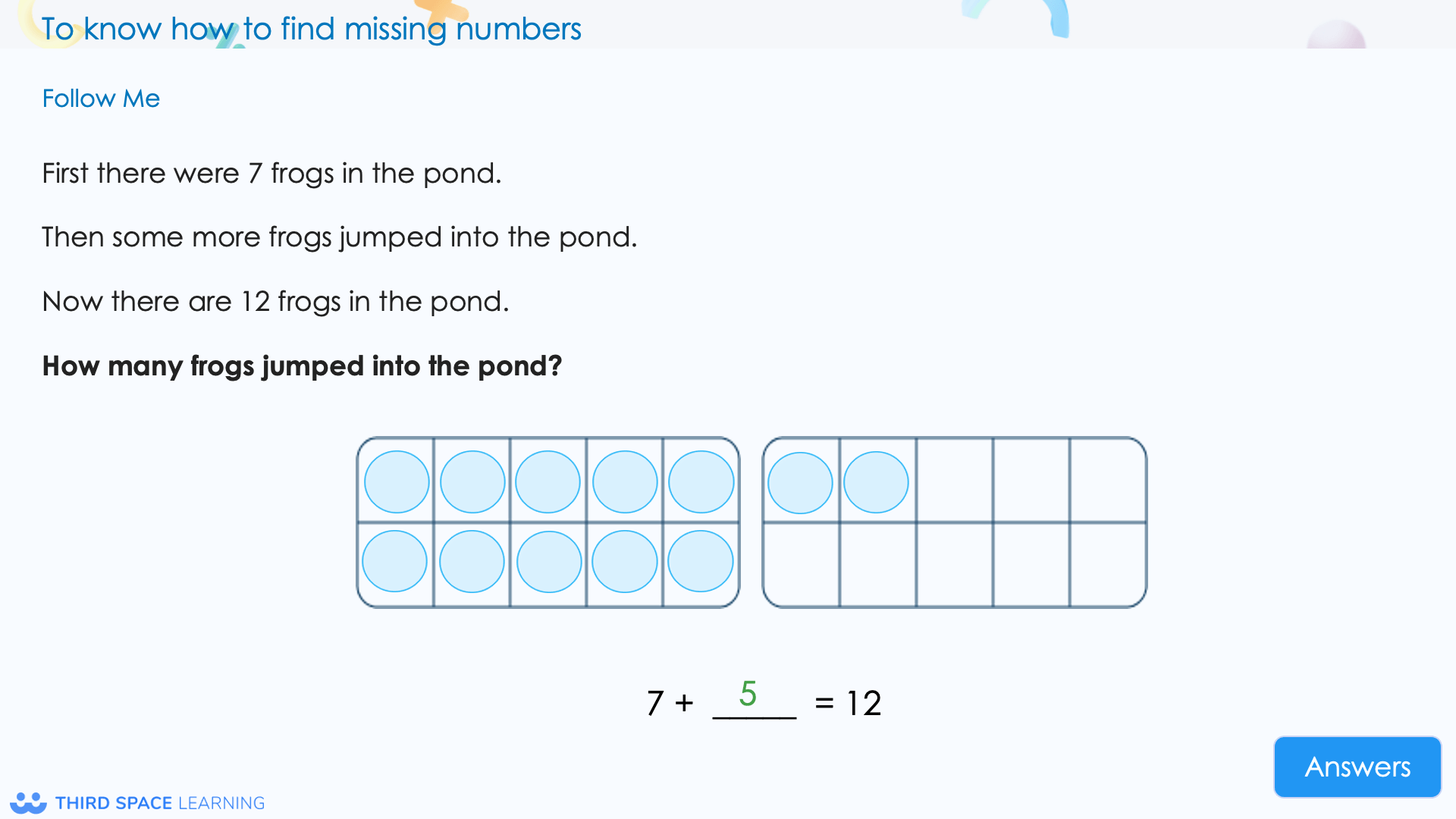
Example Year 1 addition and subtraction within 20 questions
1. Use the tens frame to work out 8 + 7
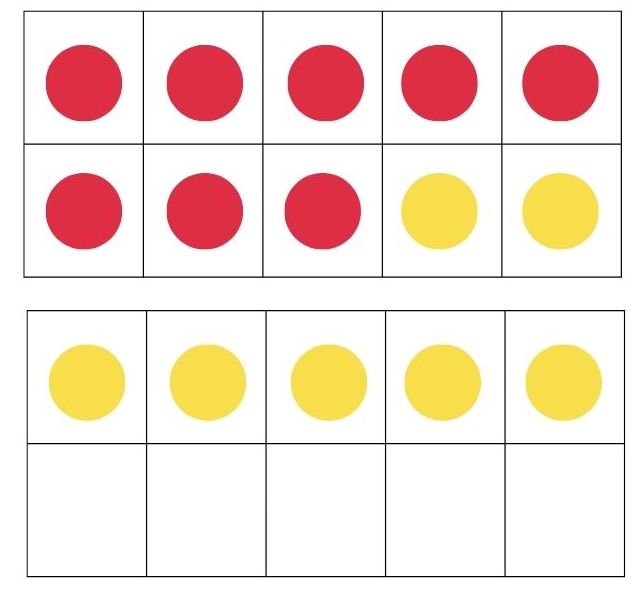
Answer: 15
2. What is 17 – 5?

Answer: 12
White Rose Maths Year 1 addition and subtraction within 20 resources (PREMIUM)
- Ready-to-go Lessons Addition and Subtraction Within 20 Year 1
- Diagnostic Assessments Addition and Subtraction Within 20 Year 1
- Worked Examples Addition and Subtraction Within 20 Year 1
Place Value Within 50 Year 1
In this third place value block, pupils count from 20 to 50, in ones and by making groups of ten. Children learn to partition numbers into tens and ones; estimate on a number line to 50 and continue to build on their understanding of one more and one less.
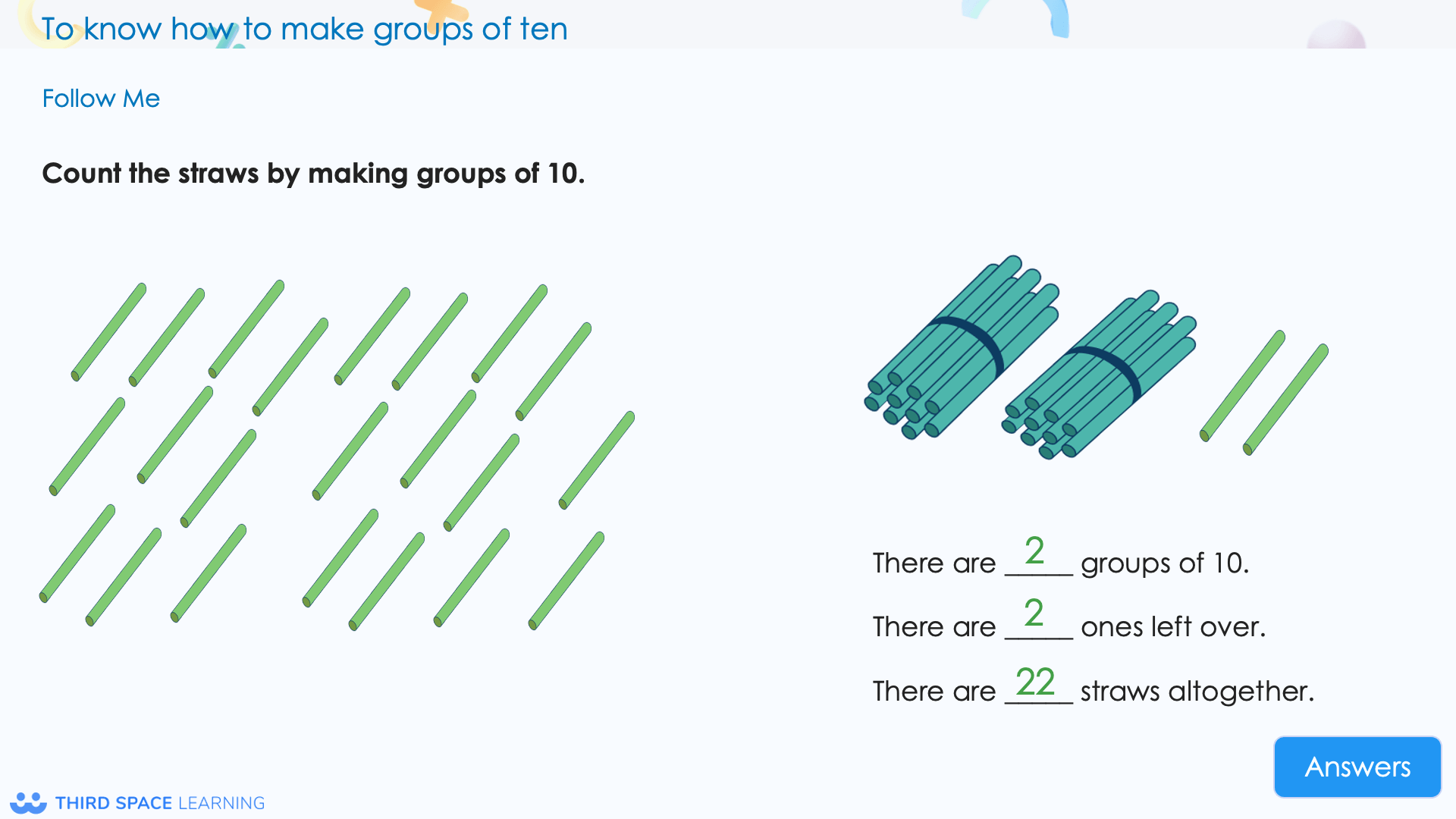

estimating the position of numbers on a number line up to 50.
Example Year 1 place value within 50 questions
1. 64 = ____ tens and ____ ones
Answer: 6 tens and 4 ones
2. Fill in the missing numbers:
25, ___, 27, 28, ____, 30, ____
Answer: 25, 26, 27, 28, 29, 30, 31
White Rose Maths Year 1 place value within 50 resources (PREMIUM)
- Ready-to-go Lessons Place Value Within 50 Year 1
- Diagnostic Assessments Place Value Within 50 Year 1
- Worked Examples Place Value Within 50 Year 1
Length and Height Year 1
This is a short block, in which pupils learn to compare lengths and height. Children measure length using objects and are introduced to using rulers to measure length in centimetres.

using the words taller, shorter, longer, longest and shortest.
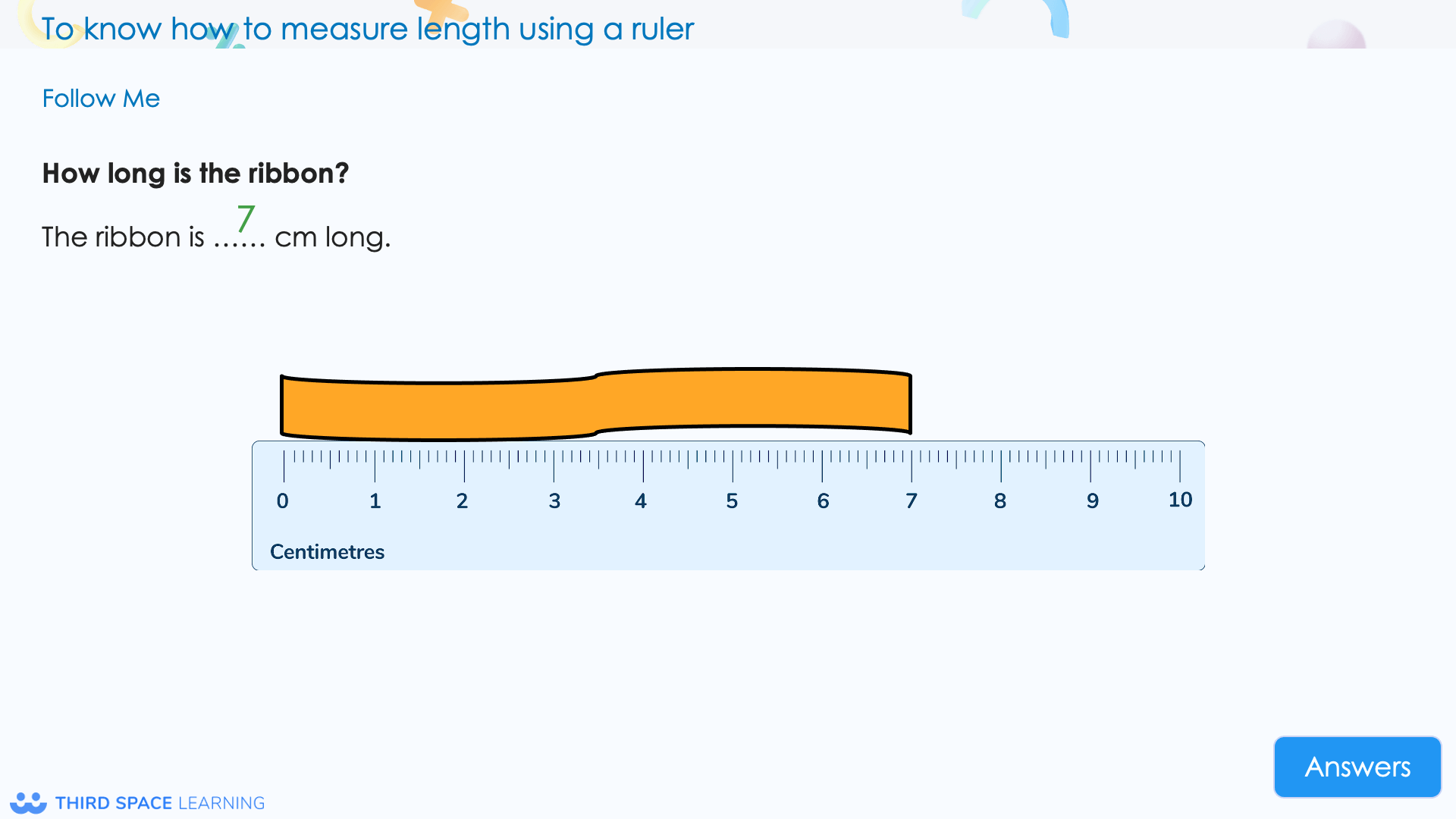
Example Year 1 length and height questions
1. Which pencil is longer?
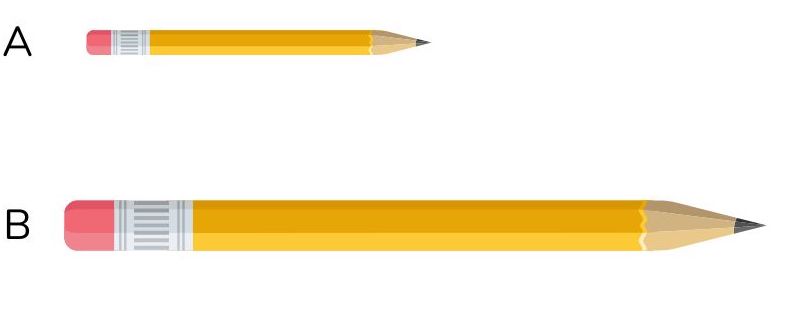
Answer: Pencil B is longer
2. Complete the sentence, so it is correct:
Line ____ is the shortest line.
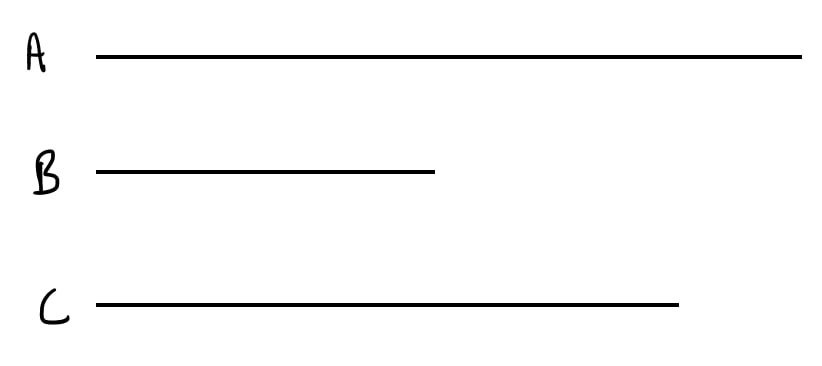
Answer: Line B is the shortest line
White Rose Maths Year 1 length and height resources (PREMIUM)
- Ready-to-go Lessons Length and Height Year 1
- Diagnostic Assessments Length and Height Year 1
- Worked Examples Length and Height Year 1
Mass and Volume Year 1
In this block, pupils investigate the concepts of heavier / lighter and full / empty. Children also learn to measure and compare mass, volume and capacity.
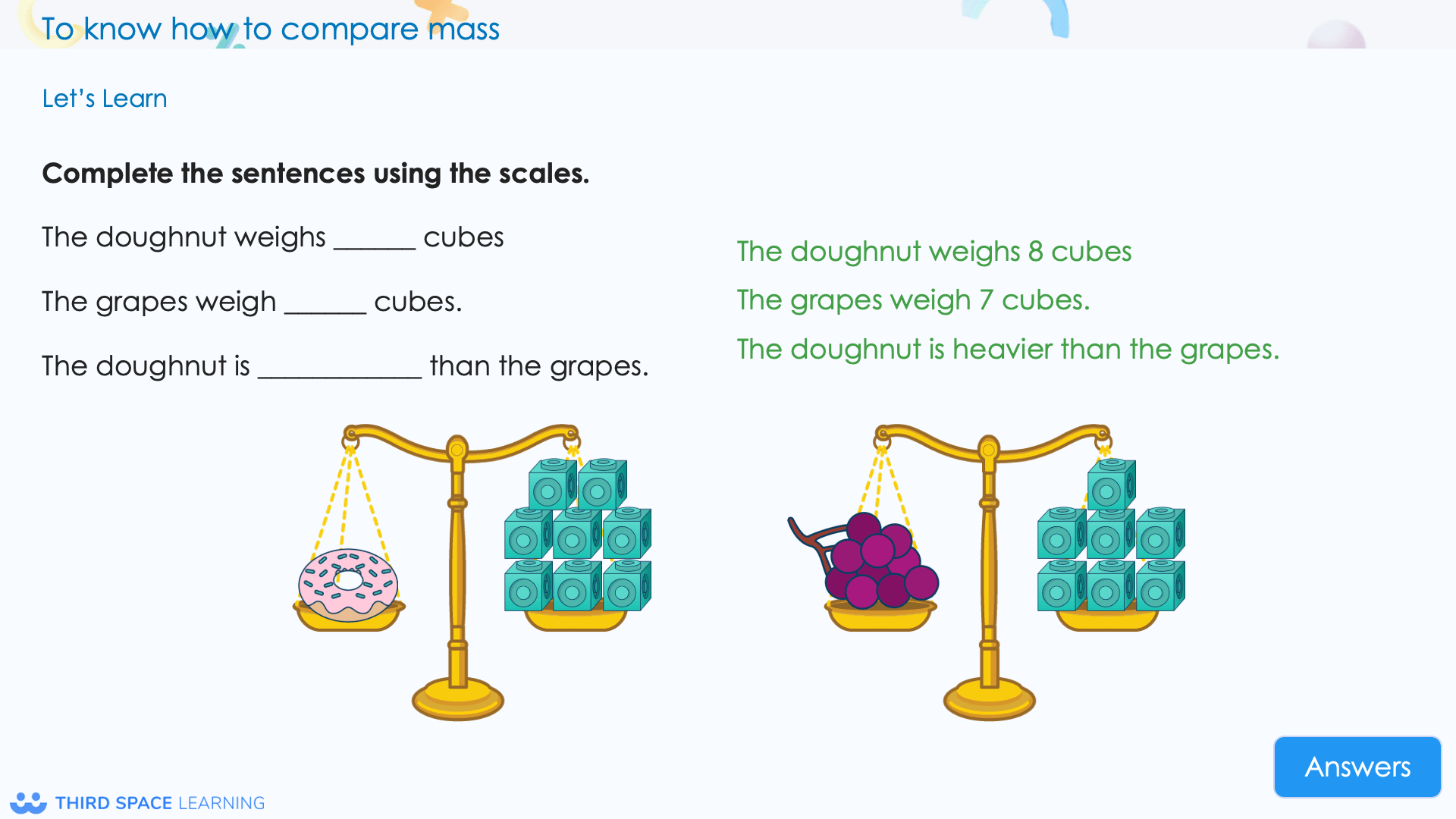
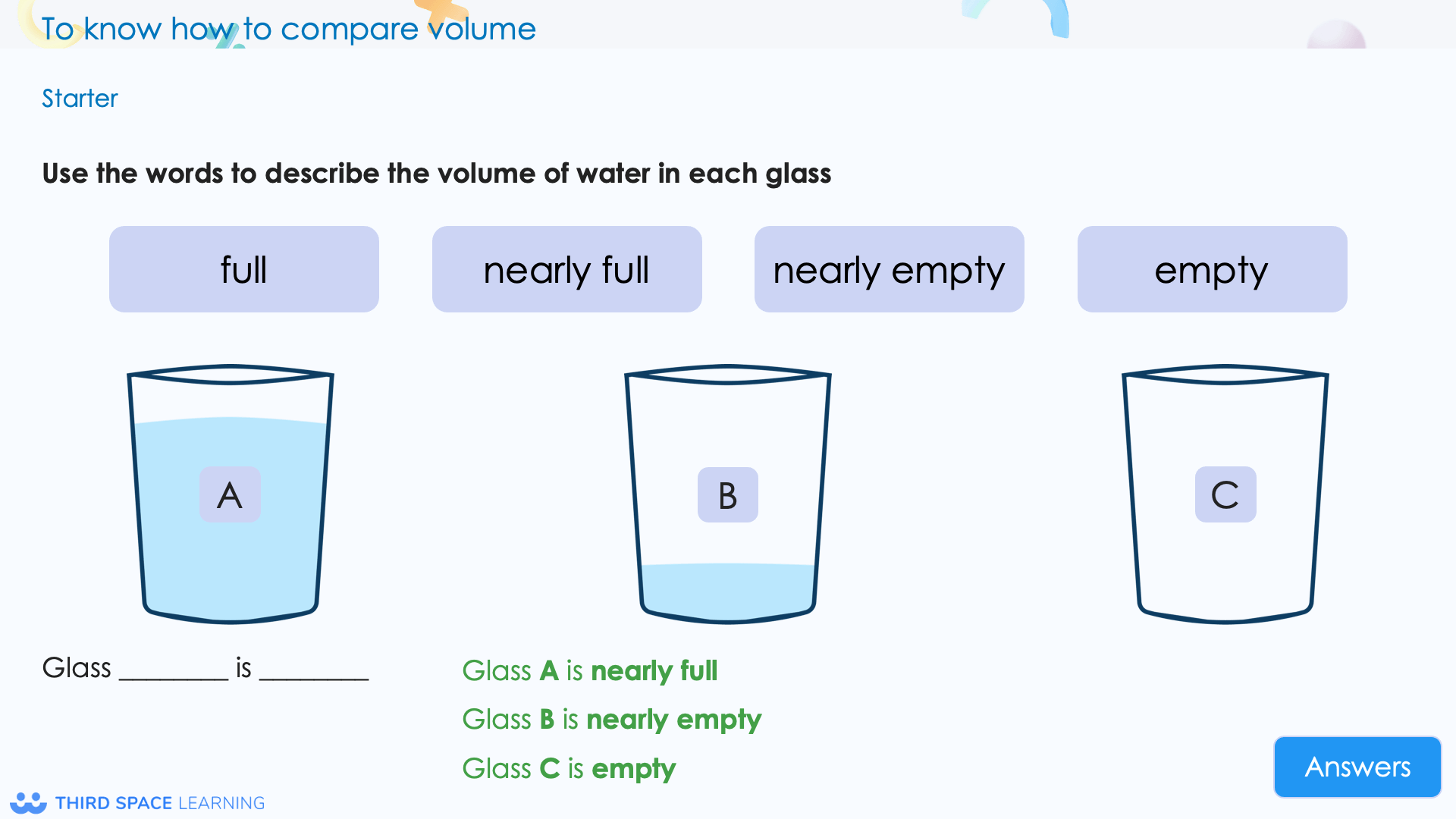
They compare the volumes of containers with the same capacity.
Example Year 1 mass and volume questions
1. Which is heavier?
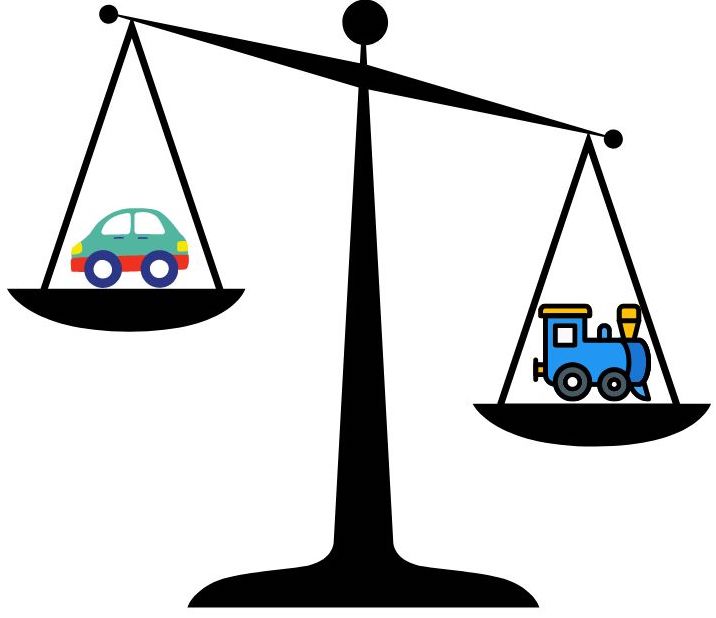
Answer: The train is heavier
2. Which container has less water?
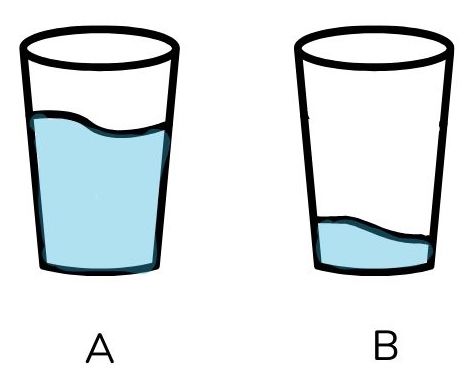
Answer: Container B has less water
White Rose Maths Year 1 mass and volume resources (FREE)
- Maths Worksheets Comparing Mass Year 1
- Maths Worksheets Full and Empty Year 1
- Maths Worksheets Measuring Capacity Year 1
- Maths Worksheets Measuring Mass Year 1
White Rose Maths Year 1 mass and volume resources (PREMIUM)
- Ready-to-go Lessons Mass and Volume Year 1
- Diagnostic Assessments Mass and Volume Year 1
- Worked Examples Mass and Volume Year 1
White Rose Maths Year 1 summer term
In the summer term, Year 1 focuses on multiplication & division, fractions, position & direction, place value within 100, money and time.
Multiplication and Division Year 1
Pupils begin to understand times tables, multiplication and division, through grouping and sharing small quantities. They learn to count in 2s, 5s and 10s, followed by recognising and adding equal groups, and making arrays and doubles.
Example Year 1 multiplication and division questions
1.
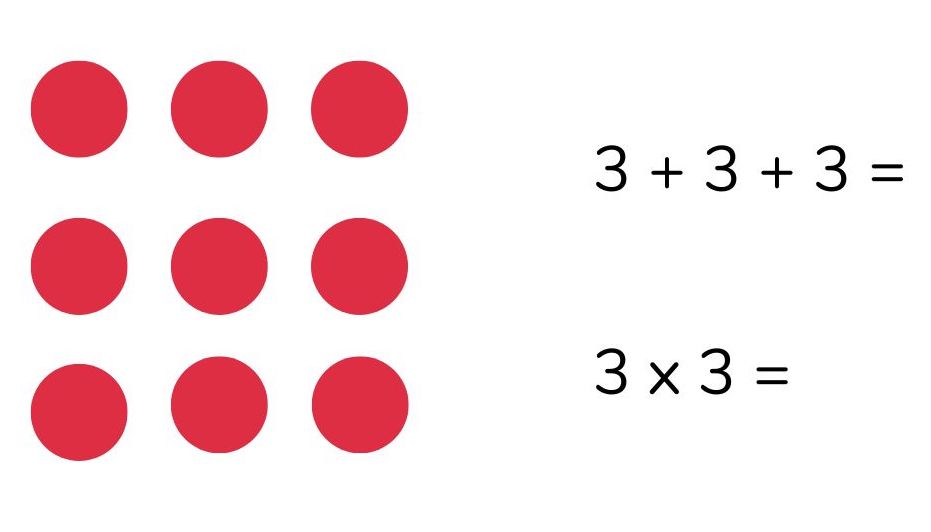
Answer:
3 + 3 + 3 = 9
3 x 3 = 9
2. Share between 4
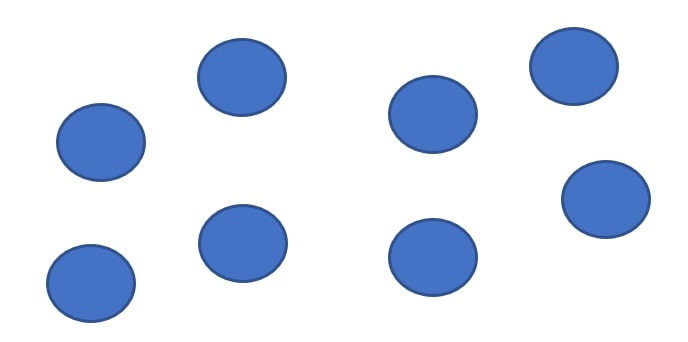
Answer:
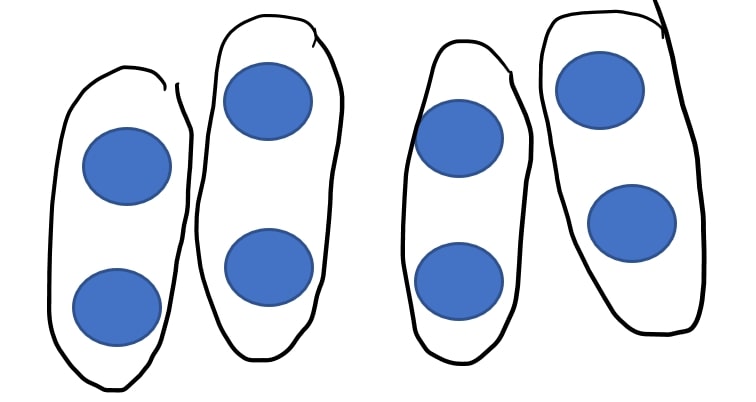
White Rose Maths Year 1 multiplication and division resources (FREE)
- Maths Worksheets Counting in 2s Year 1
- Maths Worksheets Counting in 5s Year 1
- Maths Worksheets Counting in 10s Year 1
- Maths Worksheets Grouping Year 1
- Maths Worksheets Making Arrays Year 1
- Maths Worksheets Making Doubles Year 1
- Maths Worksheets Recognising Equal Groups Year 1
- Maths Worksheets Sharing Year 1
White Rose Maths Year 1 multiplication and division resources (PREMIUM)
- Ready-to-go Lessons Multiplication and Division Year 1
- Diagnostic Assessments Multiplication and Division Year 1
- Worked Examples Multiplication and Division Year 1
Fractions Year 1
In Year 1, pupils are taught half and quarter as fractions, by solving problems using shapes, objects and quantities. Children use a range of practical resources and visual representations to help them understand the concept of fractions.
Example Year 1 fractions questions
1.Shade in \frac{1}{4} of this shape
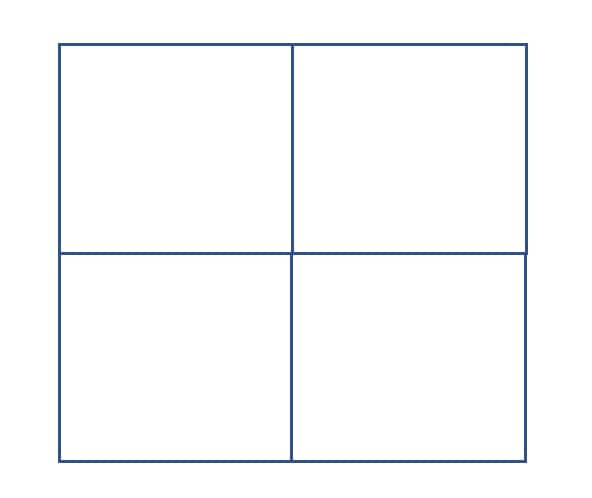
Answer:
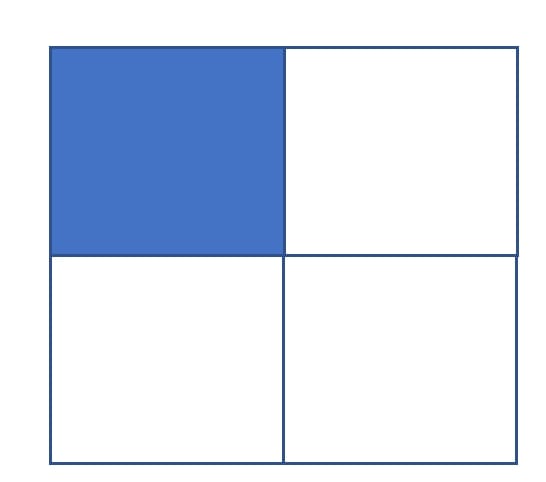
2. Put a ring round half the circles
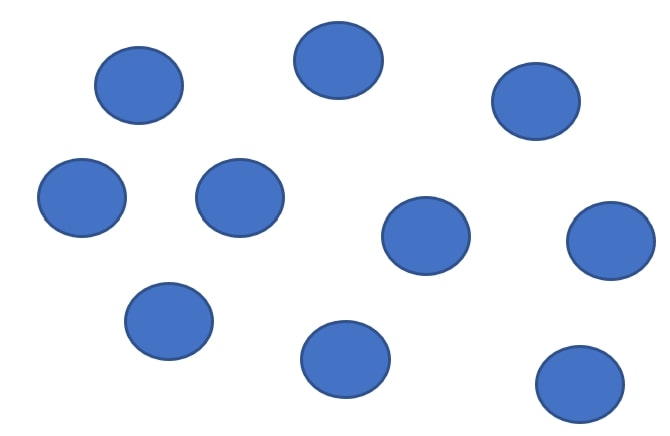
Answer: Ring round 5 circles
White Rose Maths Year 1 fractions resources (FREE)
- Maths Worksheets Finding Half Of An Object Or Shape Year 1
- Maths Worksheets Finding Half Of A Quantity Year 1
- Maths Worksheets Finding A Quarter Of An Object Or Shape Year 1
- Maths Worksheets Finding A Quarter Of A Quantity Year 1
White Rose Maths Year 1 fractions resources (PREMIUM)
- Ready-to-go Lessons Fractions Year 1
- Diagnostic Assessments Fractions Year 1
- Worked Examples Fractions Year 1
Position and Direction Year 1
This is a short unit in Year 1. Pupils use the language of position, direction and motion. They learn to describe turns and position, using left, right, forwards, backwards, above and below. Pupils also learn to make whole, half, quarter and three-quarter turns in both directions.
Example Year 1 position and direction questions
- Move the triangle down then left
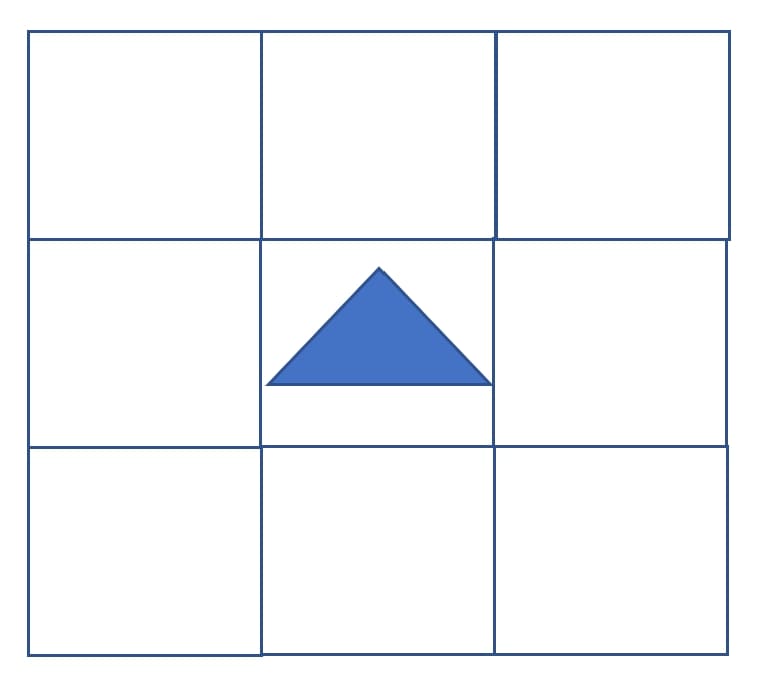
Answer:
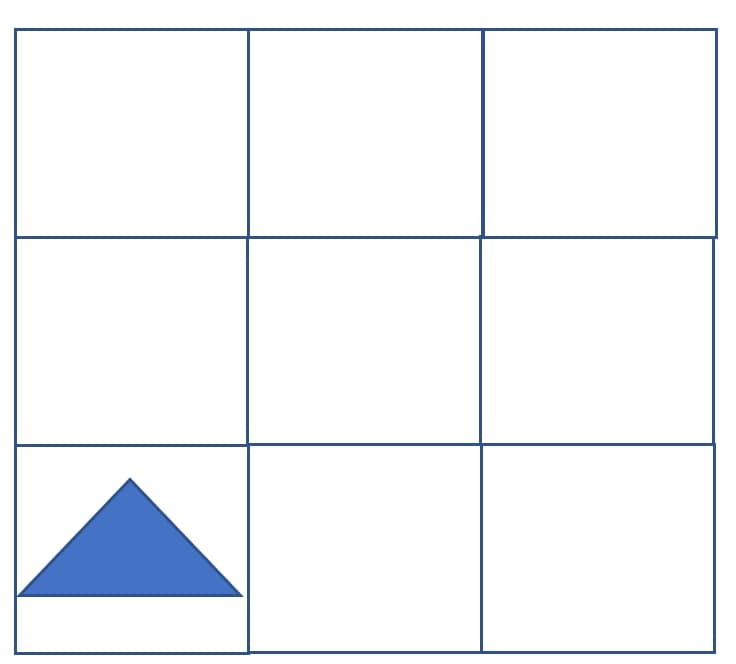
White Rose Maths Year 1 position and direction resources (PREMIUM)
- Ready-to-go Lessons Position and Direction Year 1
- Diagnostic Assessments Position and Direction Year 1
- Worked Examples Position and Direction Year 1
Place Value Within 100 Year 1
In this final place value block of Year 1, pupils count from 50 to 100 and use a number line to 100. They continue to build on their understanding of partitioning into tens and ones; finding one more and one less and their understanding of comparing numbers.
Example Year 1 place value questions
1. What number is represented here?
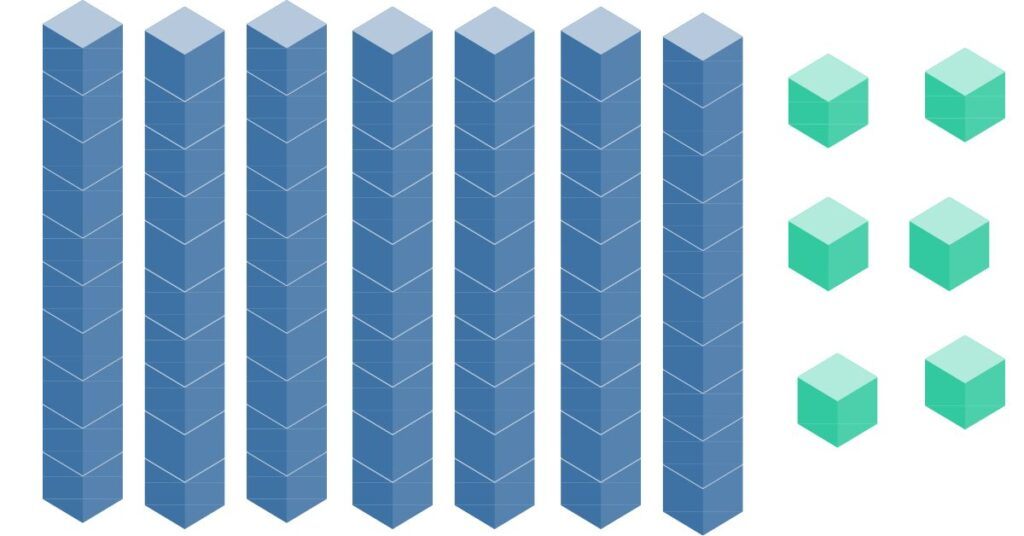
Answer: 76
2, How many tens and how many ones in the number 52?
Answer: 5 tens and 2 ones
White Rose Maths Year 1 place value within 100 resources (FREE)
- Maths Worksheets Comparing Any Two Numbers Year 1
- Maths Worksheets Comparing Numbers With The Same Tens Year 1
- Maths Worksheets Counting to 100 Year 1
- Maths Worksheets Partitioning Into Tens And Ones Year 1
White Rose Maths Year 1 place value within 100 resources (PREMIUM)
- Ready-to-go Lessons Place Value Within 100 Year 1
- Diagnostic Assessments Place Value Within 100 Year 1
- Worked Examples Place Value Within 100 Year 1
Money Year 1
Money is a short unit in Year 1. At this stage, pupils learn to recognise and know the value of different denominations of notes and coins.
Example Year 1 money questions
1. How much money is shown?
a)
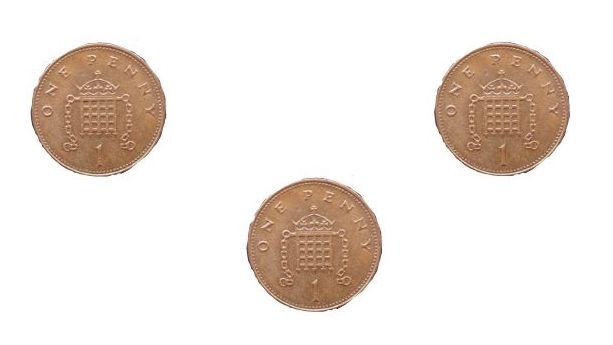
b)
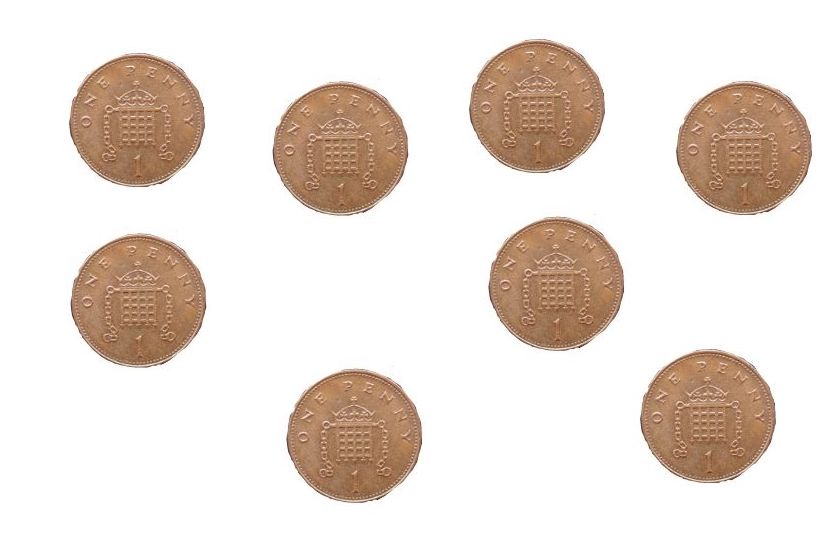
c)
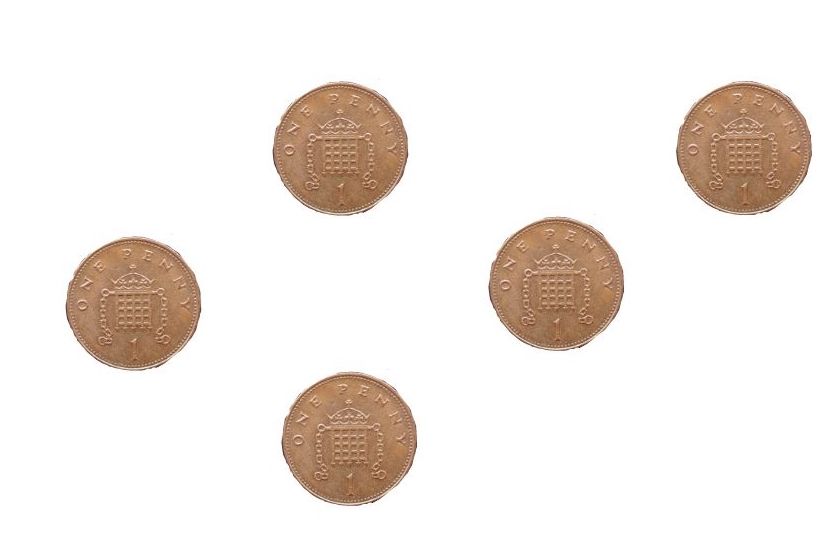
Answer:
a) 3p
b) 8p
c) 5p
2. Circle the group with the most money.
a)

b)

Answer: A has more money
White Rose Maths Year 1 money resources (FREE)
- Maths Worksheets Unitising Year 1
- Maths Worksheets Recognising Coins Year 1
- Maths Worksheets Counting in Coins Year 1
- Maths Worksheets Recognising Notes Year 1
White Rose Maths Year 1 money resources (PREMIUM)
Time Year 1
In Year 1, pupils use the language of time. They learn the days of the week; months of the year; hours, minutes and seconds. Children are introduced to telling the time to the hour and to the half hour.
Example Year 1 time questions
1. What time is each clock showing?
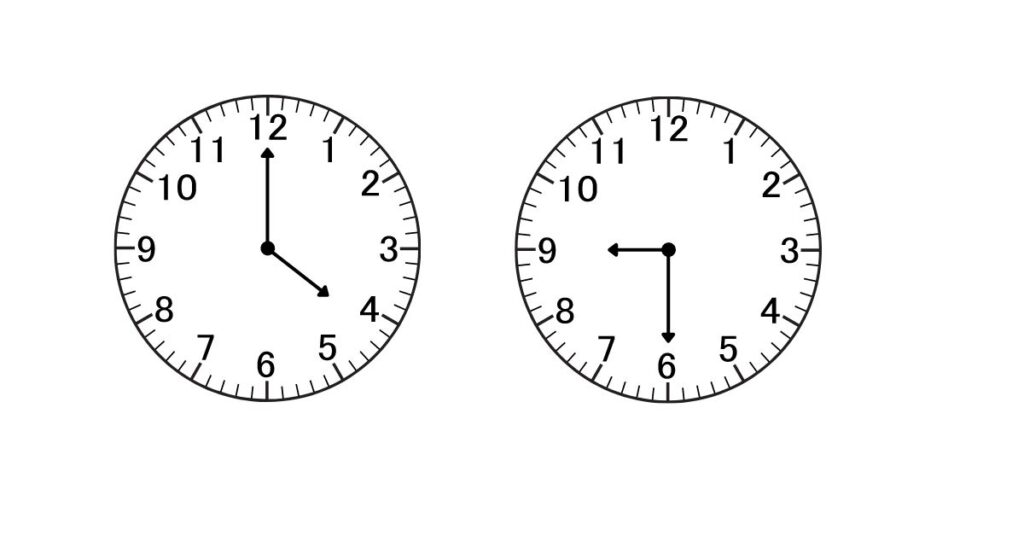
Answer: a) 4 o’clock and b) Half past 9
2. Draw the hands on each clock, to show the time.
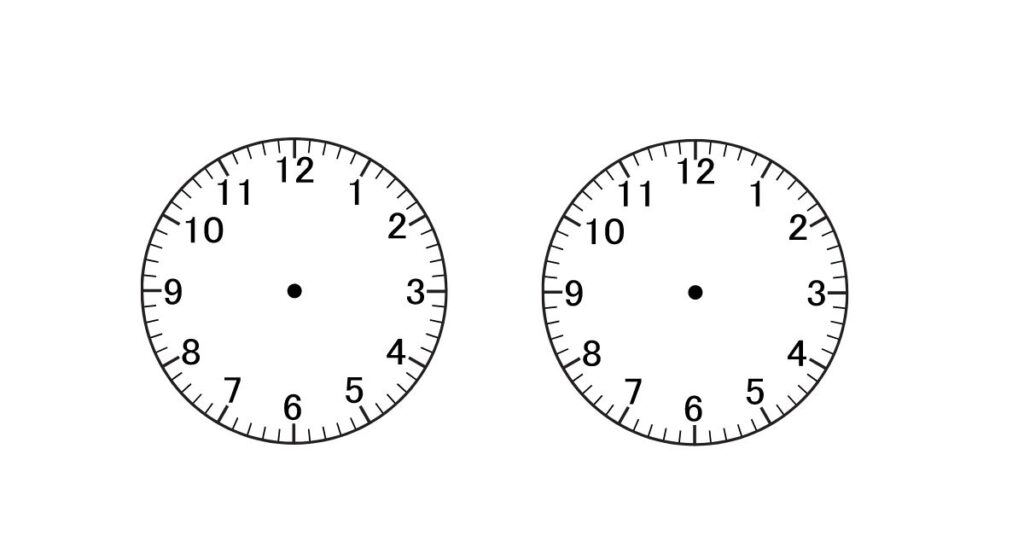
Answer:
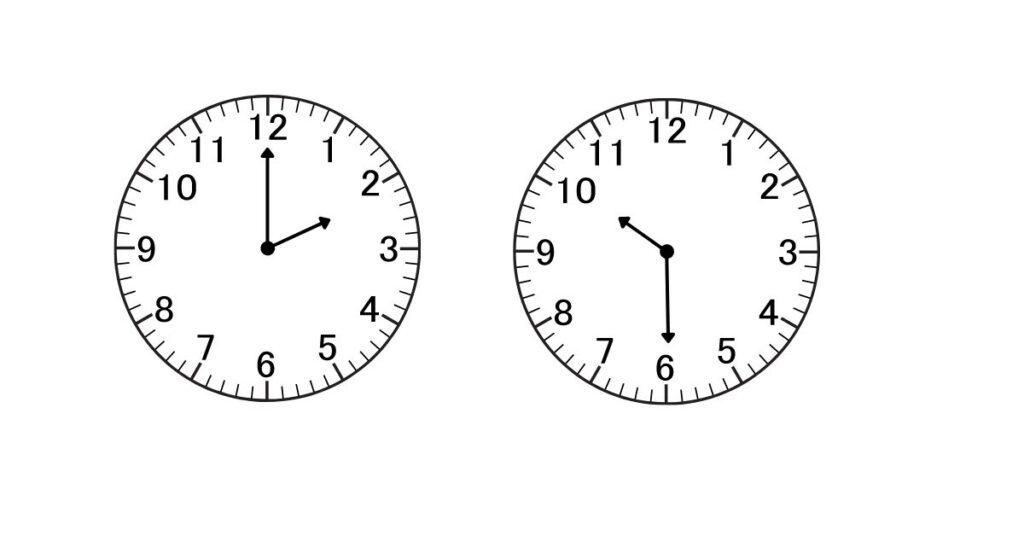
White Rose Maths Year 1 time resources (FREE)
White Rose Maths Year 1 time resources (PREMIUM)
Follow the links below for the other articles in this series:
DO YOU HAVE STUDENTS WHO NEED MORE SUPPORT IN MATHS?
Skye – our AI maths tutor built by teachers – gives students personalised one-to-one lessons that address learning gaps and build confidence.
Since 2013 we’ve taught over 2 million hours of maths lessons to more than 170,000 students to help them become fluent, able mathematicians.
Explore our AI maths tutoring or find out about primary maths tutoring for your school.



